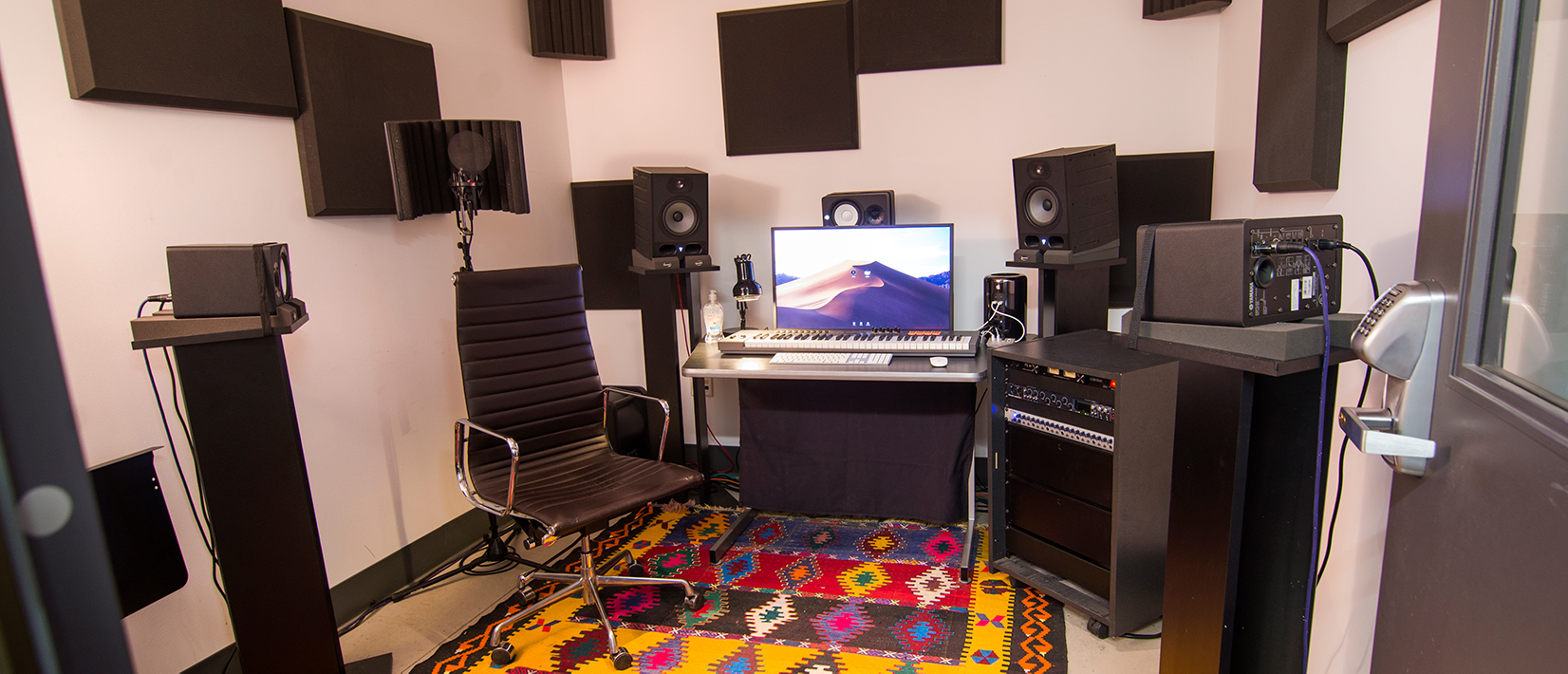
IMRC YouTube, Take One
By Brenna Martens
This year some of the graduate and undergraduate assistants at the Innovative Media Research and Commercialization Center, including myself, are working to heighten the public’s knowledge of the IMRC and the various tools and opportunities that we offer. As we work to make a bigger impact on social media, the group decided to start a transition to video content, specifically a YouTube series. Thus the IMRC YouTube Series project began.
After a semester of planning meetings, storyboarding, and script drafting, we are ready to start phase two, production. Day one of filming took place on Friday, Feb. 23 with high hopes. Our first obstacle was getting the equipment set up and the area cleared so we could do the shots without being interrupted. A tour group even came in while we were filming which caused a few setbacks.
But the real problems weren’t discovered until starting the editing process. The first major bump in the road was taking a screen recording that was going to be used in the video off of the computer in the lab where it was taken. When we did that, we then had to get all of the content into one place so that it could be edited, which started a game of telephone between all of us trying to locate the various pieces.
The second problem was trying to record a voice-over to accompany the screen recording. The script for the voice-over had to be changed and improvised a few times and no matter how many tweaks and re-recordings we did, the two never were never quite synced-up.
When moving on to the actual editing process, we quickly discovered that most if not all of our shots were unusable because of the audio quality. We didn’t have access to microphones the day of, and we thought that it wouldn’t be a problem. We were wrong. After discussing our options, we realized that it would be best to pick another day to redo the entire thing, taking what we learned from this process and applying it to the second attempt.
Here is a list of the changes we are making to our production process and prep going forward:
- Make sure you have access to ALL of the possible and necessary equipment: We were so focused on getting it done and getting a good final product that we skipped over little and important details like securing microphones for the shoot. This ended up being our ultimate issue in this process.
- Have an agreed-upon and specific place to put all of the content: Losing track of the raw footage was a big problem we ran into. For the this next attempt, we plan to have a designated flash drive for all content, including any shots done, b-roll, screen recordings, voiceovers, and anything else related to the project.
- Slow Things Down: Not only did we rush through the production process, but everything we shot that day was very fast. I think we were all nervous to get it done and get it perfect. We were rushing through everything. Rushing through and not taking the time to have the script at least 90% complete figured out and known was a problem because it led to information being left out, voiceovers not syncing up to video clips, and a level of uncertainty that negates the point of a tutorial video. Then the actual dialogue and example processes were rushed through the whole process, and we didn’t realize what was missing until we were editing, because we didn’t take the time to watch back what we were doing. Overall, we just need to be more confident and slow down what we are doing.
The first production didn’t go perfectly–it happens. We have learned a lot about what does and doesn’t work, and how to be more successful next time. We plan to do our second production day over spring break and are more excited and determined than ever to start. Until then it’s back to the storyboards–we’ll IMR-C you then.
Thank you for reading! Please check out our other posts to keep up to date with events, projects, and people at the IMRC.
